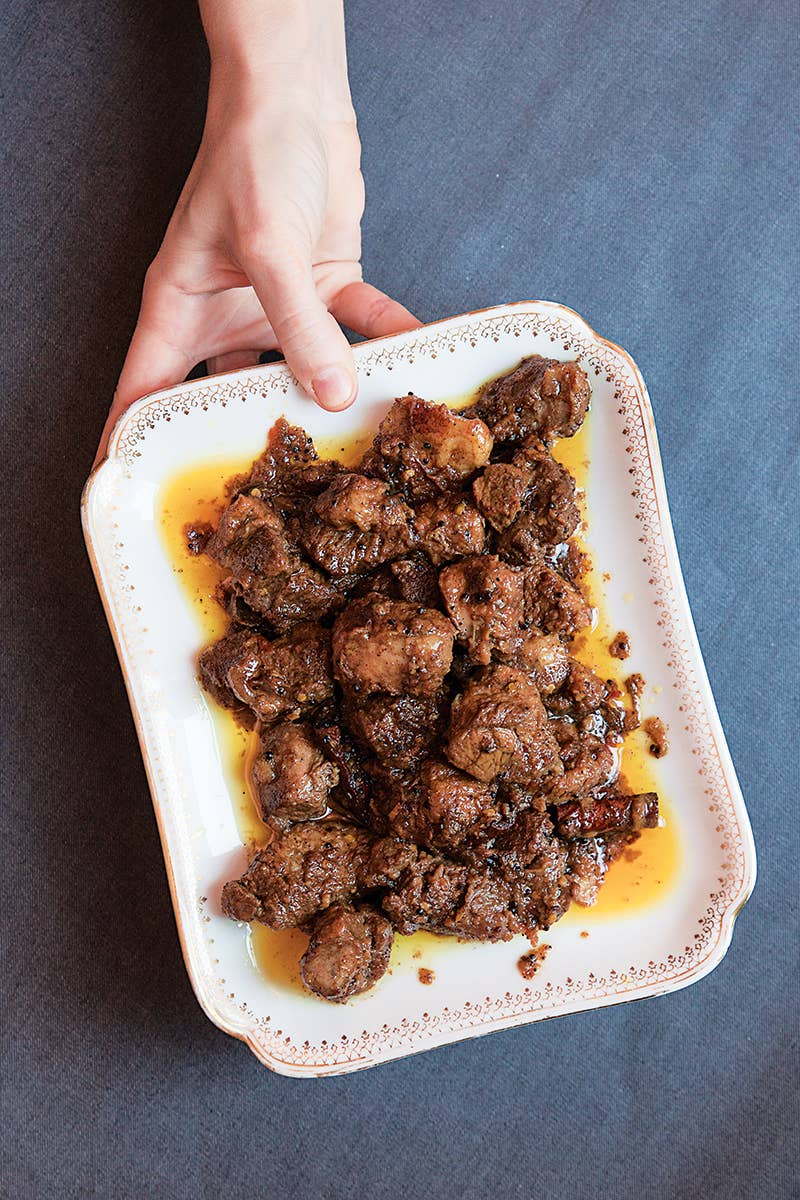
Fired Up: The History of Vindaloo
The hot, tangy, and earthy flavors of pork vindaloo have a long history of influence
In England, vindaloo is a tongue-searing curry, but it wasn't always that way. The word vindaloo is a garbled pronunciation of the popular Portuguese dish carne de vinha d'alhos (meat marinated in wine-vinegar and garlic), which made its way to India in the 15th century along with Portuguese explorers. The dish was tweaked to local conditions: There was no wine-vinegar in India, so Franciscan priests fermented their own from palm wine. Local ingredients like tamarind, black pepper, cinnamon, and cardamom were also incorporated. But the most important addition—chile peppers—was a legacy of Portugal's global empire, imported to India from the Americas. When the British occupied India from 1797 to 1813, they were delighted to discover this East-meets-West food, as well as Christian Goan cooks, who, free of caste and religious restrictions, were happy to make beef and pork dishes beloved by expats. In early British India cookbooks, vindaloo recipes remained close to the Goan original. But the dish gradually met the same fate as many Indian dishes when it was exported to England: It became another hot curry. The tang of vinegar disappeared along with the practice of marinating the meat, and the balance of different spices was lost under a blistering excess of chiles. Luckily, in Goa many versions still hark back to old days when cinnamon and cardamom provided an earthy elegance, and the heat was kept in check.
Keep Reading
Continue to Next Story










